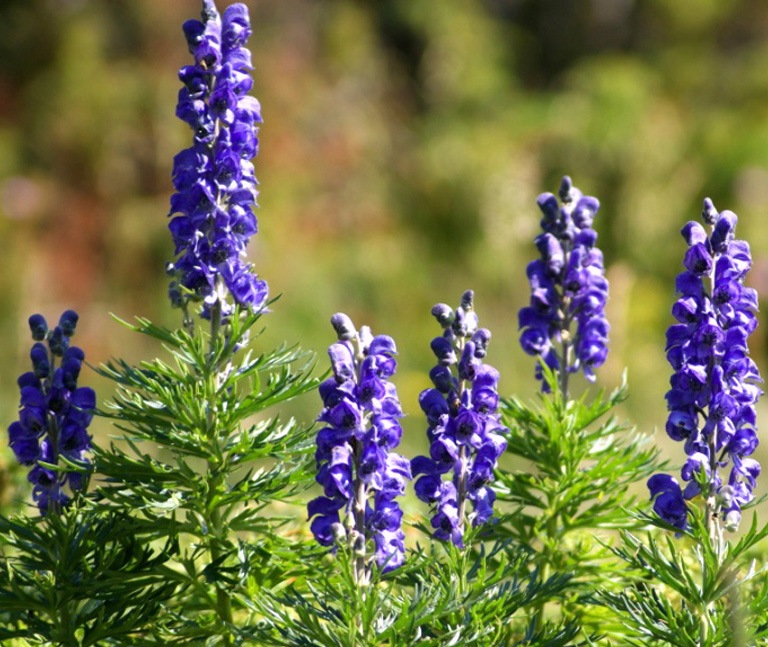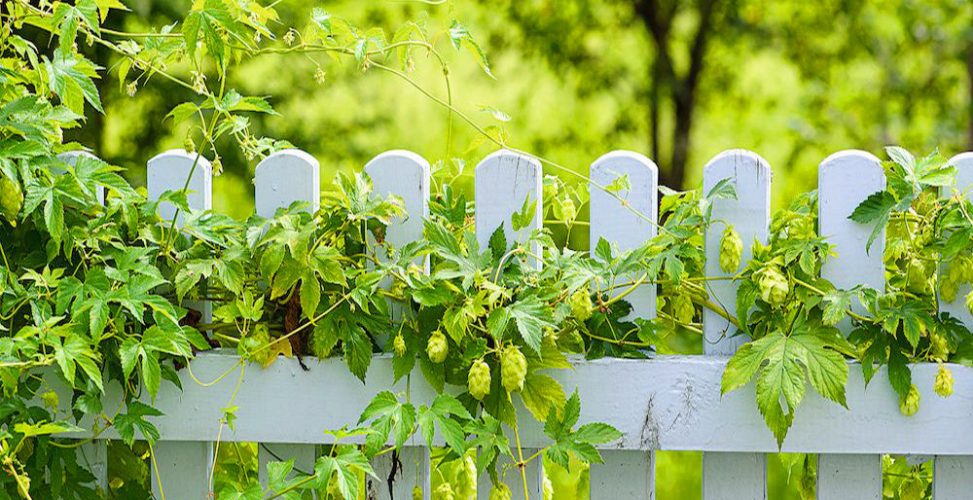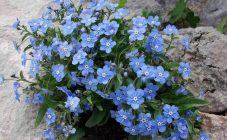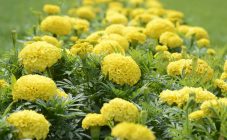Content:
A personal plot, decorated in a certain composition, is a decoration of any home. Curly perennial flowers and annual plants play an important role in the design of the site.
Perennial curly flowers for the garden are herbaceous or woody flowering plants that rise above the ground to a certain height, clinging to the stem of the support, and wintering on the site.
These plants can be used to decorate those parts of the garden where growing other plants will be problematic. In these areas, you can create a bright flowering carpet that completely covers the standing surfaces.
The best climbing plants for the garden
Curly garden flowers with which you can decorate the area around the house are diverse. But there are plants that are used in landscape design more often than others. This happens due to their beautiful appearance and appearance, as well as other parameters, such as ease of care, winter hardiness, the ability to harmoniously fit into compositional solutions.
Top 10 is represented by the following colors:
- Rose flower. The first place in the rating of curly perennial flowers is rightfully taken by weaving garden flowers - roses. The choice of a specimen for a garden is quite wide, since, thanks to breeders, it is known for a wide variety of shapes and colors. Plant care is minimal. It boils down to choosing a landing site from the south or southwest side, where a sufficient amount of sunlight penetrates. During the growth process, the plant is watered and fertilized. Mulching will not be superfluous. Before preparing for winter, the rose needs pruning. For the winter, the bushes are covered. When growing a rose, it should be remembered that abundant flowering can only be in good lighting. Flowering lasts about 20-30 days, starting in June, in the future, a thick green wall will decorate the site.
- Clematis. Clematis is not inferior in popularity to climbing roses. Their flowers, like stars, adorn the garden from early summer to autumn. After flowering, seeds are formed, which also decorate the site with their decorative appearance. The variety of species and varieties allows you to choose the appropriate flower to create an exhibition. For the development of clematis, fertile soils, protection from the wind, access to sunlight and timely watering should be provided. In the process of growing, clematis is fed, this allows you to prolong flowering. For the winter, the plant is covered.
- Campis. These vines grow fast enough, so they are often used when landscaping vertical surfaces. They can rise to a height of 15 meters, another positive quality is long flowering from early summer to September. Differs in an unusual shape of flowers. The length of the flower is up to 7 cm, it is narrower towards the bottom, in the upper part the flower expands. Campis has several varieties, but their colors are not very diverse, flowers - from pink to red. Campis can be propagated both by seeds and by cuttings and shoots. The flower is demanding to care, does not tolerate the close occurrence of groundwater, is sensitive to a lack of light and soil nutrition, and does not tolerate strong winds. Requires shelter during winter.
- Azarin. Its height can reach 3.5 m. The stem is strongly branched. The flowers have a variety of colors, they delight the eye, both white and blue, purple and pink flowers that stand out well among the green foliage. Prefers sunny locations and warm weather.
- Aconite.Another representative of curly flowering perennials is a curly flower with purple flowers, which is used in compositional solutions when decorating vertical surfaces. It is distinguished by its small height, up to 2 m. At the same time, it has beautiful flowers of various shades of blue, lilac, violet and purple flowers. It winters well, while in summer it prefers partial shade and moderate soil moisture.
- Stalked hydrangea. It grows well, with its shoots it can completely close a large structure over time. Differs in beautiful flowers with a long flowering period. Demanding on the acidity of the soil, the brightest flowers are obtained when grown in acidic areas. It also makes demands on soil fertility; during growth, it needs additional fertilizing.
- Wisteria. It is difficult to find a more unusual plant - it is a perennial loach with large flowers. Flower brushes reach a length of 50 cm. The leaves have a beautiful openwork shape. It is demanding to care for, does not tolerate frost and needs to be pruned 2 times a year.
- Wild grapes. A very unpretentious climbing plant. Often used for landscaping adjacent areas. One of the most unpretentious loaches. Fast growing, difficult to remove when overgrown. The peak of attractiveness occurs in autumn, when the foliage takes on a crimson hue. It is decorated with dark blue berries. The main positive qualities: unpretentiousness and rapid growth.
- The princes are relatives of clematis. Their flowers are in the form of drooping bells, small petals are surrounded by large sepals. Attaches to vertical surfaces with leaves and petioles. Distinctive features: long flowering, easy care, unpretentiousness, early flowering. The plant is not removed from the support and is not cut off for a dormant period, it is winter-hardy. Virtually no disease.
- Hop. He is a long-liver, for 20 years it can grow in one area. The stem grows to a height of 7 m. The leaves are rough. The flowers of the female plant are cones, the male plant has panicles.
Growing climbing perennials
When planting curly flowers, a number of recommendations should be followed:
- When choosing a site for planting, the lighting requirements of the plant are taken into account.
- To grow it, you need a support, the strength of which depends on the severity of the vines.
- The supports are exposed before the loach planting.
- Plants are not planted close to the walls, where the soil is infertile and dry.
- Most climbing perennials are demanding on the fertility and acidity of the soil.
- Loach formation begins from the beginning of growth.
- To obtain a beautiful hedge, pruning is carried out.
Curly flowers for the garden, like indoor flowers, can be susceptible to various diseases, with improper care, they can lag behind in development. In order to prevent withering of climbing plants, you need to properly care for them.
So, a climbing rose with a lack of moisture and nutrients, insufficient sunlight begins to hurt and may die. It can be affected by rust, powdery mildew, black spot and other diseases. Most of them can be prevented by observing the rules of care and taking preventive measures.
Clematis are more susceptible to fungal diseases. When the first signs of the disease are detected, fungicides are used. To prevent the development of diseases in the spring, when the leaves have not yet appeared, and in the fall, before the shelter, the soil and shoots are sprayed with foundation.
Campis is a rather unpretentious plant. But for rapid development, he needs timely watering. For lush flowering, nitrogen fertilizers are applied. To stimulate young shoots, pruning is carried out.
Azarina can be grown not only on vertical surfaces, but also in flowerpots, into which a support is inserted, along which the liana will climb. The main pest of asarin is aphid.But it can be easily destroyed with chemicals.
A curly flower with purple flowers, whose name is aconite, is planted in the spring, when the soil warms up enough. As they grow, they are fed with mineral fertilizers. Mulching is a must in summer. It should be remembered that an excess of moisture is dangerous for the plant.
To grow hydrangeas, it is important to choose an area with acidic soil and sufficient lighting in the morning. In the scorching sun, they provide protection, otherwise the hydrangea will get burns.
Wisteria is easy to care for. There are frost-resistant varieties that winter well in Russian regions.
Princes bloom very early, when most climbing plants are still growing. To obtain genuine varieties, planting material should be purchased from nurseries.
Hops are susceptible to several types of diseases. To protect against pests, aphids, powdery mildew, they are treated with chemicals. In the fall, planting is protected from waste. Mineral and organic fertilizers are applied annually.
Curly perennials in landscape design
Perennial loach flowers are used for landscaping vertical surfaces. You can come up with a composition yourself, you can invite a specialist who will create an original and beautiful composition of loaches.
So, you can create a hedge, which will not only decorate the site or summer cottage, but also act as a fence. An incredibly beautiful blooming arch, which is formed from climbing plants, or a pergola.
The range of use of perennial loaches is quite wide, annuals are used together with them, everyone decides for himself which ideas will be implemented.















